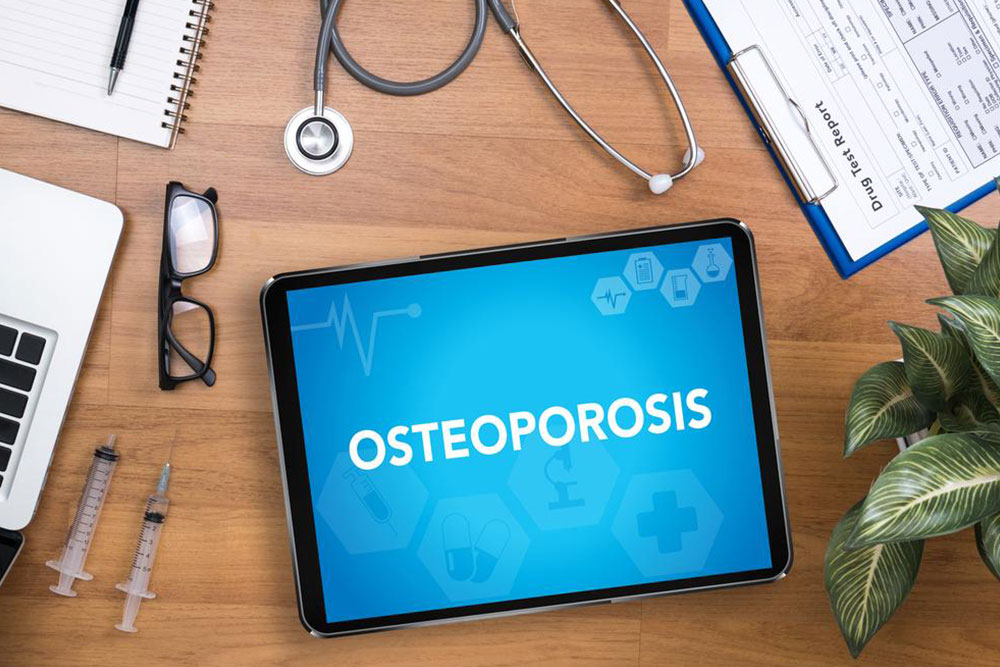Comprehensive Guide to Preventing and Managing Early Bone Loss
This comprehensive guide explores effective strategies to prevent and manage early bone loss, including medical treatments, nutritional improvements, physical activity, and lifestyle changes. Early intervention is essential to prevent osteoporosis, fractures, and maintain overall bone health. Regular screenings and personalized care are emphasized to ensure optimal outcomes, making this an indispensable resource for individuals seeking to protect their bones and sustain mobility well into old age.

Comprehensive Strategies for Preventing and Managing Early Bone Loss
Bone health is a critical aspect of overall well-being, especially as we age. One of the early indicators of declining bone strength is osteopenia, a condition characterized by reduced bone mineral density. While osteopenia itself is often asymptomatic, it serves as a warning sign that, if left unmanaged, can develop into osteoporosis—a more severe condition marked by fragile bones prone to fractures. Understanding the underlying causes, risk factors, and effective management strategies is essential for maintaining strong bones and preventing serious health complications in later years.
Bone remodeling is a continuous process involving the breakdown of old bone tissue and the formation of new bone tissue. When this balance tips in favor of bone resorption, it results in decreased bone density. This imbalance is influenced by various factors, including genetics, lifestyle habits, hormonal changes, and underlying health conditions. Early detection and proactive intervention are vital for halting or reversing the progression of bone loss.
In this comprehensive guide, we explore proven strategies to manage early bone loss effectively. From medical treatments to lifestyle modifications, nutritional enhancements, and weight-bearing exercises, we provide a detailed overview of how to strengthen bones, reduce fracture risk, and ensure better quality of life as you age.
Understanding Osteopenia and Its Significance
Osteopenia is essentially a stage where bone mineral density (BMD) is lower than normal but not low enough to be classified as osteoporosis. It is typically diagnosed through dual-energy X-ray absorptiometry (DEXA) scans, which measure bone density precisely. Although osteopenia may not cause immediate symptoms, it signifies an increased vulnerability to fractures, especially in the hips, spine, and wrists. The importance of early diagnosis cannot be overstated, as it opens opportunities for intervention that can prevent progression into osteoporosis.
Why Preventing Bone Loss Matters
Bone health is fundamental to mobility, independence, and overall health. Fragile bones increase the risk of fractures, which can lead to long-term disability, chronic pain, and decreased quality of life. Osteopenia and osteoporosis are particularly prevalent among postmenopausal women due to hormonal fluctuations that accelerate bone loss. Men are affected too, but at a slower rate. Preventive measures and early management are crucial for avoiding these adverse outcomes and preserving a high level of function as you age.
Effective Management Strategies for Early Bone Loss
Successfully managing early bone loss requires a holistic approach combining medication, dietary modifications, physical activity, and lifestyle adjustments. Regular monitoring and personalized care are essential components in creating an effective prevention plan tailored to individual needs and risk profiles.
1. Medical Treatments and Interventions
When bone loss accelerates or fracture risk increases, healthcare providers may prescribe specific medications. These include bisphosphonates like alendronate and risedronate, which help inhibit bone resorption. Other options include selective estrogen receptor modulators (SERMs), hormone replacement therapy (HRT) for suitable candidates, and newer agents like denosumab or teriparatide for severe cases. Regular bone density assessments enable clinicians to evaluate the effectiveness of treatment and adjust protocols accordingly. In some cases, calcium and vitamin D supplements are integrated into treatment plans to support bone mineralization.
2. Nutritional Strategies to Boost Bone Strength
Proper nutrition forms the foundation of bone health. Increasing intake of calcium-rich foods is paramount. Dairy products such as milk, yogurt, and cheese are excellent sources, alongside leafy green vegetables like kale, spinach, and collard greens. Fatty fish such as salmon, mackerel, and sardines provide not only omega-3 fatty acids but also contribute to bone vitality. Vitamin D is critical for calcium absorption; sources include fortified cereals, eggs, and adequate sunlight exposure. Reducing the consumption of caffeine from coffee, tea, energy drinks, and processed foods can also help preserve bone density. Moreover, limiting alcohol intake and avoiding smoking are vital lifestyle choices that can significantly impact bone health.
3. Physical Activity and Weight-Bearing Exercises
Regular physical activity, especially weight-bearing and resistance exercises, stimulates bone growth and maintains density. Activities such as brisk walking, jogging, dancing, stair climbing, and strength training are highly effective. Engaging in exercises that improve balance and stability, like tai chi and Yoga, can help prevent falls, thereby reducing fracture risk. It is advisable to work with a physiotherapist or fitness expert to develop a safe and effective exercise plan, especially for individuals with existing health issues. Be cautious of high-impact or excessively strenuous activities that could risk fractures, particularly in the spine or hips. Incorporating fall prevention strategies into daily routines enhances overall safety.
4. Lifestyle Modifications and Preventive Measures
Beyond diet and exercise, lifestyle factors play a crucial role in maintaining bone health. Quitting smoking and moderating alcohol consumption are strongly recommended. Maintaining a healthy weight is important; being underweight can increase fracture risk, while obesity can stress bones and joints. Regular check-ups and screening for at-risk populations, such as postmenopausal women and men over 70, allow for early intervention. Ensuring a safe home environment—removing tripping hazards, installing grab bars, and ensuring good lighting—can prevent falls and related fractures.
Recognizing Risk Factors and the Importance of Early Action
Understanding the risk factors associated with bone loss helps in taking timely measures to protect bone health. Age is a significant risk factor, particularly for individuals over 50. Women are more susceptible, especially after menopause due to declining estrogen levels that accelerate bone resorption. Poor nutritional habits, lack of physical activity, smoking, excessive alcohol consumption, and certain medical conditions like autoimmune diseases, osteoporosis, or chronic corticosteroid use can increase risk. Identifying these factors early enables proactive steps—such as dietary improvements, lifestyle changes, and medical interventions—to prevent bone deterioration. Regular bone density screenings are recommended for at-risk groups to facilitate early detection and management.
In conclusion, managing early bone loss is a multifaceted process that requires awareness, medical guidance, and lifestyle adjustments. By prioritizing bone health through early detection, proper nutrition, targeted exercise, and preventive measures, individuals can significantly reduce their risk of osteoporosis and fractures, leading to healthier, more independent aging.





